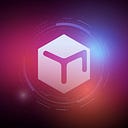💎 What is Web 3.0?
Web 3.0 is a conceptual representation of the further development of the Internet space and technology. It is generally accepted that it combines decentralization, anonymity, and the absence of intermediaries when users interact with each other. However, the concept of Web 3.0 has a broader interpretation and includes a set of fundamental characteristics.
1️⃣ Decentralization. Information is stored in Web 2.0 centrally on servers and data centers of large IT giants. Computing power is also concentrated there. In turn, information and its processing in Web 3.0 should be distributed among a wide range of users.
2️⃣ No censorship. Web 3.0 is supposed to abandon censorship from tech giants and give users full freedom of speech. However, we are not talking about information anarchy. The user community will act as moderators in the Web 3.0 network.
3️⃣ Open source. Most software must be open source in Web 3.0. This will enable users to know exactly how to interact with it. In particular, people will understand what personal data is being collected.
4️⃣ Ubiquity of AI. Although some users are negative about the development of artificial intelligence, most of them vote for it. It is believed that AI will help people find interesting content and other tasks in Web 3.0.
5️⃣ Semantic web. Despite the technology advances, human natural speech is hardly perceived by machines. To increase their efficiency, Web 3.0 can use the idea of a semantic web, which operates by building links “subject 1 — connection type — subject 2”. However, not all followers of the Web 3.0 idea support this concept.
🌐 The above parameters of Web 3.0 are the key ones. In practice, a huge number of user groups represent the “perfect” Web 3.0 in their own way, making their own additions to its concept.
#Relictum_Bockchain #Ecosystem #Relictum
